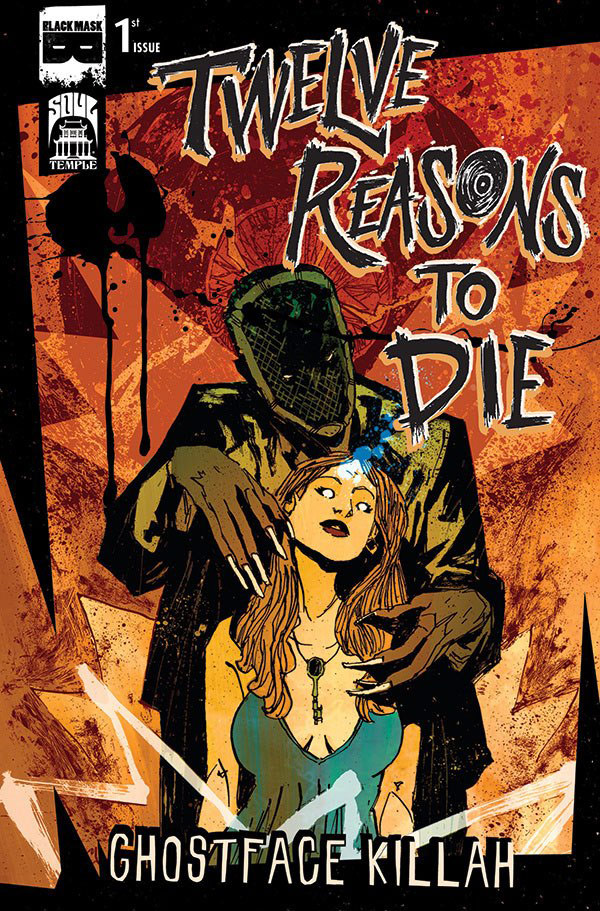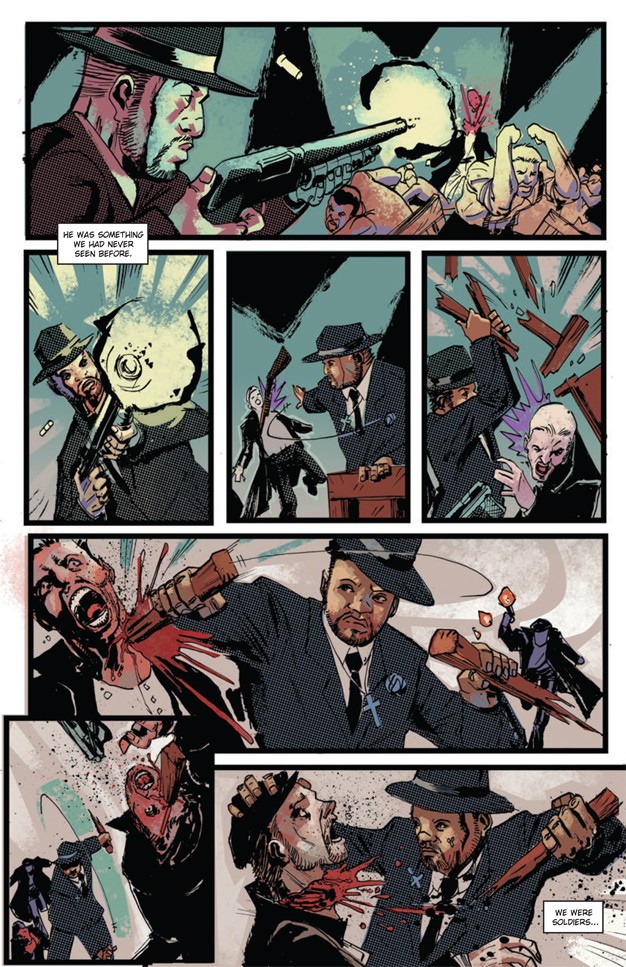Hip-Hop legend Ghostface Killah released his new record, Twelve Reasons to Die last month that tells the story of crime, violence and revenge from beyond the grave. Three elements that have always inspired classic comic books. The record has twists and turns and the fantastic instrumentation and production by Adrian Younge, sounds like an old Italian horror film but with Ghostface's trademark flow rolling off every note.
This week Black Mask Studios released the first issue of their comic book also titled Twelve Reasons to Die written by Matt Rosenberg and Patrick Kindlon and a staggering slew of talented illustrators including Tim Seeley, Paolo Rivera, Francesco Francavilla Ramon Perez , Ben Templesmith, Riley Rossmo ,Garry Brown , Jim Mahfood, Kyle Strahm, Toby Cypress, Tyler Crook, Joe Infurnari, Breno Tamura, Nate Powell, Gus Storms, Chris Mitten, and Ron Wimberly.
I got to talk to Matt Rosenberg about his work on writing the book and hip-hop culture and comic books.
Dave: What was it like working with such a prolific hip-hop artist as Ghostface Killah?
Matt: Working with both RZA and Ghostface Killah has been amazing. Both of them bring so much to the table in terms of their vision, their creativity, and just their storytelling ability. The really great thing is that they both have a lot of ideas but they also are very respectful of other people's ideas and work. It's exactly the type of collaboration people hope for when they do something like this.

Dave:How much of the story did you have to develop with you and your co-writer?
Matt: The initial idea was conceived by Twelve Reasons To Die's producer Adrian Younge and his bandmate C.E. Garcia. They had the whole plan for this Giallo crime/horror album. They brought that to RZA and Bob Perry at Soul Temple Records who brought it to Ghostface and later brought it to me and my writing partner Patrick Kindlon. What they had is really the skeleton of the story. It's structure and concepts. All of their stuff is still in the book (and on the record), but we made it it's own thing.
Dave: Do you think hip-hop culture and comics culture share similarities? If so do you think that's something that can be expanded upon in the future?
Matt: Certain elements definitely. The things I love about comics are a lot of the things I love about hip-hop. Comics used to be this unstoppable juggernaut of youth culture. Everyone I knew read comics as a kid, loved comics as a kid. But now comics are probably the most marginalized artistic medium in the country. With so few people reading comics these days I think when you get into mainstream hip-hop and big two comics (Marvel and DC) you start to lose some of those elements, but on the level we are working? Sure.
We make these books and these records because it's all we want to do. Comic creators having tables at comic cons is the same as rappers selling their records out of the trunks of their cars. It's the same game. And the people taking a chance on the unknown mixtape or the photocopied comic are what keeps the culture alive. I think for a lot of the hip-hop folks I know and a lot of the comic folks there is just so much love for the craft and so much admiration for ones peers that you don't see other places. Listening to hip-hop folks talk about RZA's beats is almost identical to listening to comics folks talk about Bernie Wrightson's linework. I know I study Ghost's lyrics and the way they move a story the exact same way I study Brian Bendis' dialogue.
Both cultures need to be better about taking care of each other and making sure we recognize the people who came before us.
As for expanding on the connections between the two in the future? Sure. Just don't be exploitative and treat both hip-hop and comics with respect.

Dave: How about your thoughts about music centric stories in comics? Is that something you'd be into exploring more in your work?
Matt: Music in comics is interesting to me because those are my two great passions and I am constantly struggling to make them get along. I think music in comics for the most part is really hard to do. Comics aren't like film or television where you can put together a montage and play an emotional song and cheat the audience into the reaction you want. We have to have all of that on the page. Some people can make a connection between music and comics work brilliantly. Alan Moore does it more often and better than anyone has a right to. Gillen and McKelvie's Phonogram is another great example. But for the most part it just feels clumsy to me, like an afterthought on a story that doesn't work quite right. Using music in your comic often feels like you are just calling on other mediums to help you, and that doesn't work for me. That's why I love working on Twelve Reasons to Die. The music element was built in from the start. I doubt they would say this, but I think Ghostface and Adrian's record is the soundtrack to my comic. I write with Adrian's music in mind. The story has a score and the score is written in as part of the story. That is not a chance I will probably get again and I don't know that I will want to tell another story that is this music driven. I got handed a real unique opportunity and I am trying to work with it to the fullest.

